Planning review position statement: analysis of responses
Analysis of responses to the Scottish Government's Position Statement following the consultation on Places, People and Planning.
4 Main Planning Review Themes
Emerging key threads:
- For many of the respondents, they were offering support in principle but would like to see further detail on the proposals. Consequently, there was some criticism of the current level of detail.
- There continues to be a high degree of interest in Local Place Plans ( LPP), but with divergent views both across and within the respondent categories; on issues such as the need for additional resources and aid for communities, and on whether this creates an additional burden for the planning service.
- Community organisations were still calling for some form of Equal Rights of Appeal – even if that was just an exploration of options.
- Simplified Planning Zones ( SPZ) were generally supported provided the matters of detail can be worked out to provide heritage and environmental designations with adequate protection, and for design and place quality to be assured. However, the idea of Ministerial designation of SPZs did not have broad support.
- Investment in an improved planning service was supported broadly. However, the development industry has expressed concern that no measures have been suggested at this stage that demonstrates the link between increased fees and increased performance.
- Permitted Development Rights proposals drew support from different perspectives for different reasons across the respondent categories. Community responses focused on small scale development such as bike sheds and community growing space. Planning and policy raised different issues on whether or not extending permitted development rights would free up additional resources. The business sector sought permitted development rights for energy developments below a certain scale and the development industry supported this on the basis that it would free up additional resources to work on major applications.
Theme 1 Making plans for the future
1. Aligning community and spatial planning
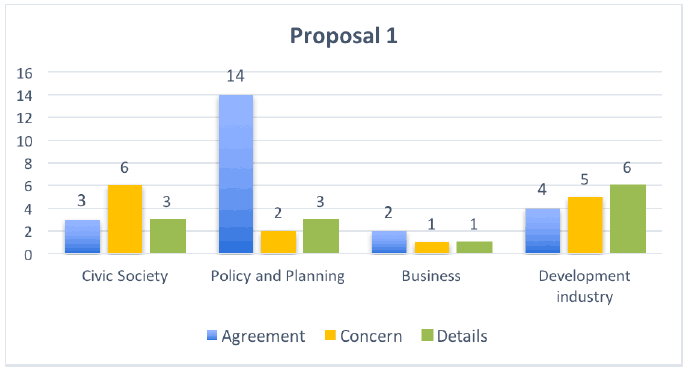
Areas of support/agreement
Within all four respondent categories, there was support expressed for creating a statutory link between community planning and development planning. Planning and policy respondents supported the proposal for Chief Executives to sign-off Local Development Plans ( LDP) on the basis that this affords planning a more corporate status.
Concerns expressed
Within civil society and planning and policy a question was raised as to the need for a statutory link, and if policy or guidance issued would be enough to ensure a connection between community planning and spatial/development planning. This was a bid to make sure that the system does not become overly complicated and the increased risk/potential for delays to the preparation of LDPs.
Business responses were also concerned about the alignment with other plans and other policies, such as Climate Change Plan, Onshore Wind Policy Statement and Energy Strategy, in case alignment with community planning prevented this type of alignment from taking place.
Within civil society responses, there was also a question raised regarding resourcing the proposed connection, presuming that this would take additional work. As well, some expressed concerns about potential centralisation and the loss of strategic expertise.
Development industry respondents noted concern that aligning the plans would lead to delays, and that the LDP might be "diluted" and the focus moved away from Spatial Planning.
More information/clarifications
Civil society and development industry respondents requested clarification on the process when there would be a conflict between the community plan and LDP. Which would be afforded more weight/primacy? As well, there were questions about what it meant by Community Planning?
The detail of how plans would align if there would be particular matters on which they should do so, and how the plans would then sit alongside each other was requested by civil society and development industry respondents.
More detail was also sought on the proposed sign-off process, how this might add value to the process and if the sign-off process will ensure the LDP will be taken account of in corporate strategies.
Some of the civil society wanted to know how can Community Planning or Spatial Planning process become more inclusive.
From the policy and planning, they requested details on what additional requirements would this impose on councils? And how it will be implemented on the practical level.
Some from the development industry requested more details on how Community Plans would sit alongside the proposed LPP, about the link and on the weight/primacy of Community Planning in the LDP process, and how representative will be the community groups and what their focus would be?
Ideas and additional thoughts
Civil society respondents were hopeful that the alignment of the two plans creates greater opportunities for communities to influence their places. Furthermore, some considered that there should be a requirement for Community Planning to work within the statutory planning system, not the other way around
For planning and policy, additional ideas and considerations included the implications on staff time and resources in aligning the two plans, an idea to introduce a Chief Planning Officer in each local authority area whose role would be to oversee the impact of investment on the spatial development plan. There were also calls for ensuring there was alignment of land-use planning with transport infrastructure and economic plans (including labour market areas). Some believed that the change to the LDP should be made organically according to the vision of the local community it is targeting rather than having all the decision imposed on the local community.
Business and development industry respondents both considered the impact that there might be on the deliverability of the development plan – this is something that in their view must remain central to its purpose, and not be derailed through alignment with the community plan. Moreover, they advocated that the relationship between both parties should be reciprocal, it should add-value, reduce double-working and maximise resources within authorities.
For some in the development industry, local authorities should take the ultimate decision of the content of LDP, and they should "sign off" the LDP.
2. Regional partnership working
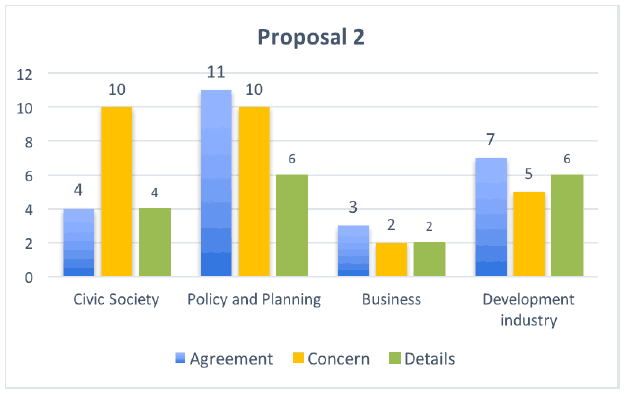
Areas of support/agreement
Across the respondent categories regional partnership working was supported, provided that it produces a way of working that is robust (at least as robust as Strategic Development Plans ( SDPs) if replacing them) and supports delivery of infrastructure and housing.
Civil society and planning and policy respondents expressed a lower level of support for removing SDPs, while business and development industry respondents expressed a higher level of support.
Concerns expressed
While there were some supporters of removing SDPs, there were concerns across the respondent categories regarding their removal.
Civil society respondents were concerned that the move would represent centralisation and risks overloading NPF to the point that it becomes ineffective. There was also concern that SDPs are effective partnerships between local authorities and this would need to be replaced.
Planning and policy were concerned that removal would create a skills and knowledge gap. There was also concern that voluntary partnerships would be highly dependent on healthy relationships and may break down without a statutory underpinning.
Business respondents' concerns were that any replacement must be just as effective.
Development industry respondents who expressed concern did so on the basis that certainty in the system may be undermined if there is a move from an accountable statutory body at a regional level to an unaccountable, voluntary arrangement. Therefore, the removal of the SDP would overflow the system with regional partnership working that lacks statutory powers and duties and thus, will slow down the process.
More information/clarifications
How disputes between parties will be resolved was a question from civil society, policy and planning and development industry respondents. The geographic coverage of regional partnerships, and where responsibilities, priorities, expertise and resources lie were areas that clarification was sought in.
Civil society respondents would like information on how communities feed into regional partnerships.
Planning and policy would like more information on how regional partnerships/ strategic planning feed into NPF, whether it would be as the evidence base and what influence will they have.
Businesses respondents called for more information about the proposal in general and about regional partnership working in particular.
Development industry respondents were interested in knowing through what mechanism and who will set the housing supply target and spatial growth patterns. They demanded more assurance for house building industries on how duties and powers will be considered.
Ideas and additional thoughts
The planning and policy respondents thought that more consideration should be given to:
- The status which a spatial strategy will have and the role it will play;
- The mechanism to ensure stakeholders contribute to the preparation of a strategy; and
- The process to guarantee meaningful governance and accountability.
3. Improving national spatial planning and policy
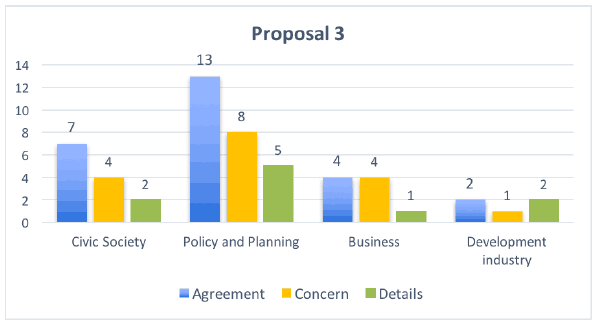
Areas of support/agreement
Respondents from planning and policy, business and development industry supported the enhanced role proposed for National Planning Framework ( NPF) and Scottish Planning Policy ( SPP). For planning and policy and the development industry respondents who supported this also noted support for policies that are developed at a national level and therefore, do not need to be repeated in LDPs.
Civil society respondents individually supported different aspects of the Position Statement under this proposal, but there was no single area around which there was agreement.
Concerns expressed
Similarly, to the previous consultation , civil society respondents continued to express concern that this was a move towards centralisation.
Planning and policy respondents were concerned that no transitional arrangements have been proposed at this stage. Turning to a new system without transition arrangements in place for local authorities with Development Plans in the process could undermine the plan-led system by leaving local authorities with invalid LDPs. This respondent category also has responses that express concern that enhancing NPF and SPP will be viewed as a top-down approach to planning.
Business respondents were concerned that the timescale for preparation of enhanced NPF is ambitious, as is the alignment between planning reform and other policy change. The concern was that this could lead to uncertainty in the planning system.
The development industry respondents did not raise any major concerns regarding the proposals in the Position Statement.
More information/clarifications
Civil society respondents would like more information on how communities can/will be involved in the production of an enhanced NPF.
Planning and policy respondents sought clarification on the relationship between regional partnerships and NPF, how regional partnership views will be taken into account and vice-versa how NPF will influence regional planning. There was also a question of how the revised and enhanced NPF will set housing numbers and how this, in turn, feeds down to regional and local levels.
Business respondents requested more information on the statutory role of NPF and SPP and how these duties will influence decision-making.
Development industry respondents wished clarification with regards to the circumstances in which departures from the national policy at a local level might be appropriate, and how local authorities would justify this, through the provision of evidence or other means.
Ideas and additional thoughts
For civil society respondents, the enhanced NPF should be matched with an equally enhanced programme of consultation with the public, and scrutiny in the Scottish Parliament to match the new status. Additionally, from both civil society and planning and policy, the NPF must align with other national policies and strategies to deliver high-quality places (alignment with health, transport, education etc.).
Planning and policy respondents highlighted a need to keep a degree of subsidiarity of policy in the system to take account of differing local circumstances.
In line with previous comments, business respondents would like to see a clear alignment between NPF and LDPs to provide a coherent and consistent policy framework of which they can work.
The development industry respondents suggested that should NPF, and SPP have a policy that is to be inserted into LDPs, there needs to be a greater level of detail and clarity than currently expressed to streamline the process. Respondents from this category also suggested the need for a set of transitional arrangements – to prevent a situation arising where there might be a need to call a moratorium on new development.
4. Stronger local development plans
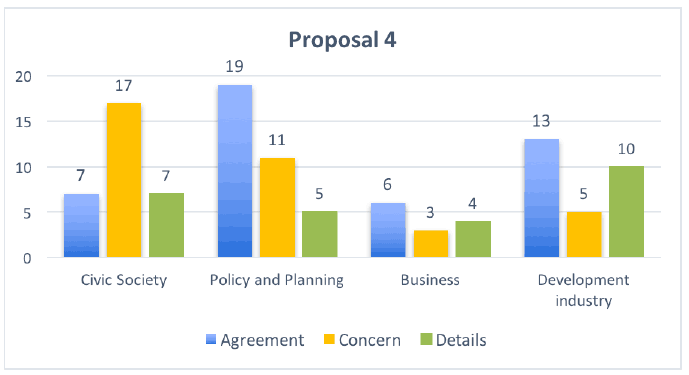
Areas of support/agreement
The gatecheck and early resolution of issues were supported by both civil society and development industry. For civil society, the support was based on opportunities to resolve departures from national policy, and for the development industry, this was very much in line with their support for early engagement, resolving issues early to provide longer-term certainties.
Support for the 10-year plan was contained within all of the respondent categories, but this support was caveated with the need for a provision for updates and review.
Business respondent supported the role of NPF and SPP in influencing LDPs, therefore balancing local and national interests.
Concerns expressed
The proposed removal of Supplementary Guidance ( SG) was a concern for civil society and planning and policy respondents. For civil society, this concern was based primarily on the protections that SG offers for natural and heritage assets, if this protection were not in SG then, it would need to be contained somewhere else. For planning and policy, the current detail in SG was viewed as necessary; therefore, a new location for this detail will be needed, and if it is in the LDP then, this appears contradictory to the aims of a streamlined system.
Civil society respondents were, also, concerned about the proposed removal of the Main Issues Report ( MIR) stage as this was a key point for communities to engage with options.
Resolution of conflict at the gatecheck stage was an issue raised by planning and policy and development industry respondents – this was raised as a concern due to the potential for legal challenges and delays should there not be a method for resolving conflicts at this stage.
As in the previous consultation, the 10-year plan time frame for production and the length of the plan period continued to be a source of concern. Some planning and policy respondents considered the production timeframe to be overly ambitious, with a more realistic expectation being 3-4 years. Business respondents were concerned that a 10-year plan will be very out of date, particularly when it comes to the rate of technological advances in sectors such as renewable energy and telecommunications. The development industry respondents were concerned that a 10-year plan will not maintain a 5-year effective supply of housing land and will, therefore, need to be responsive to keep this up to date.
More information/clarifications
The two areas in which more information was requested under this proposal were the gatecheck process, and the LDP review/update process.
For the gatecheck process, detail on what matters should be considered and by whom was requested. Planning and policy suggested there will be a need for pre-agreed lists of matters, participants and a statement on how the process is managed. Development industry respondents requested detail on the level of certainty the gatecheck process will provide for the rest of the plan preparation process.
For the LDP review/update process, civil society, business and development industry respondents wanted a definition of what the triggers for a review/update will be.
Ideas and additional thoughts
Civil society respondents had several ideas related to SG:
- Retain it as complimentary to the Draft Plans, providing detail on issues of local context and delivery.
- Retain it as part of ongoing engagement, it has been useful in drawing together community, business and development views and could continue to have this type of function.
- Hold SG at national level as part of SPP – it could be drawn down and adapted for local use as necessary.
Planning and policy respondents had a series of suggestions regarding the gatecheck process and what this could involve. Matters suggested included:
- Whether there is an adequate evidence base ( e.g. infrastructure capacity, environmental assets and constraints, housing land assessments and audits);
- Outcomes to be sought from the plan (housing requirements, targets for other development types, reuse of vacant and derelict land);
- Proposed departures from national policy on the basis of local circumstances;
- Methods for the plan preparation including the approach to engaging delivery bodies and the public, alignment with community planning and the scope of the accompanying environmental assessment.
Planning and policy respondents, also, suggested aligning the gatecheck process with the SEA process by adding a further stage or making it iterative.
Development industry respondents suggested annual Housing Land Audits will be carried out and these act as the key trigger for an LDP review or update, with the aim of maintaining a 5-year effective supply of housing land.
5. Making plans that deliver
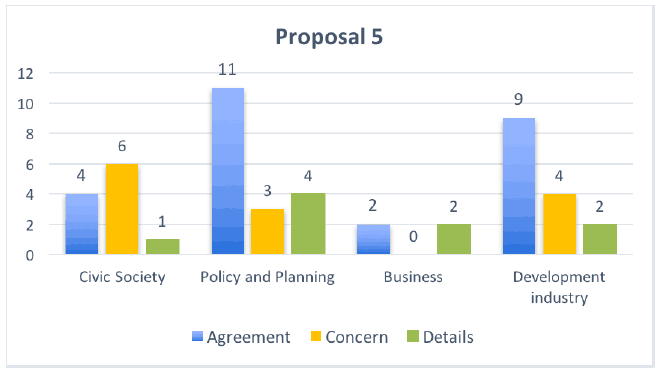
Areas of support/agreement
There was support for enhanced engagement for unallocated sites across the respondent categories – but with significant variation in what would be deemed acceptable in that regard. Civil society and planning and policy presumed that this engagement would be an extension of current arrangements, while business and development industry viewed this enhanced engagement as being so in proportion to a reduced engagement period for allocated sites. For example, one suggestion was that a Pre-Application Consultation ( PAC) period for an unallocated site remains at 12 weeks, while the PAC for an allocated site would be reduced to 6 weeks.
Planning and policy respondents supported the replacement of action programmes with delivery programmes.
Concerns expressed
Civil society respondents were concerned that engagement periods for allocated sites would be reduced below what they currently are. Communities wanted to be involved in matters of detail beyond the principle of development.
Some planning and policy respondents were concerned that different engagement requirements for allocated and unallocated sites create a two-tier system in which it is difficult to justify to communities why less engagement will be required on a site by right of it having been allocated.
More information/clarifications
Civil society respondents would like clarification on the point at which the local authority would be involved in the strengthening of the local plan delivery programme.
Planning and policy respondents request further information on how local development plan delivery can be strengthened through secondary legislation.
Business and development industry respondents would like more information on how the de-allocation of sties might fit with this, and if there is scope for some form of formal de-allocation process or if it would be a matter to be addressed in a review of an adopted local development plan.
Ideas and additional thoughts
Civil society respondents emphasised that a strong plan led system was critical for the success of the planning system in Scotland. The system has to be incentivised to ensure that windfall sites are an exception.
Planning and policy respondents suggested that there be a set of duties for all community planning partners, external delivery partners, and corporate stakeholders within local authorities to play a full part and be committed to delivery. Additionally, timescales for delivery should be set in order to encourage sites to be progressed, with sites that do not deliver within that timescale being removed and alternative sites being identified to compensate.
Development industry respondents suggest that once a site is allocated in the LDP, this presumes buy-in from all into principle of development and its delivery, the planning application process for allocated sites should not undermine this buy-in, and the level of community consultation should recognise this.
Theme 2. People make the system work
6. Giving people an opportunity to plan their own place.
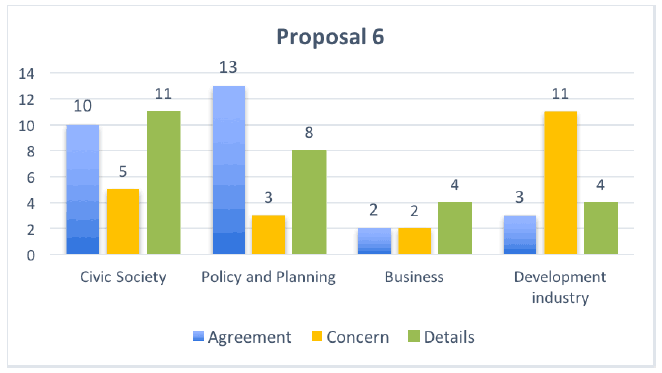
Areas of support/agreement
Across the respondent categories, there was support for Local Place Plans ( LPP) – for different reasons. Civil society respondents supported LPPs as an opportunity for communities to have a meaningful input to LDP. Planning and policy respondents were supportive of the proposal that LPPs are informed by LDPs. For both business and development industry respondents, they were supportive of the proposition that LPPs have a stated purpose of promoting appropriate development.
Concerns expressed
Civil society respondents were concerned that LPPs will not have any influential status, that they will not inform LDPs. There was also concern that communities are not resourced nor have the skills to participate meaningfully, this was a particular concern for communities in disadvantaged areas.
Planning and policy respondents' concerns were around resourcing, both for communities and planning departments, and the potential for delays that may occur if LPPs will be required to have an adopted LDP in place. There was concern that articulate and better-resourced communities will be in a position to produce LPPs, while disadvantaged communities will not, thus, creating a greater gap between these communities.
Business and development industry respondents' concerns were that community groups could still attempt to use LPPs to block or delay development. There were, also, concerns that LPPs will delay LDP production and that the addition of this process is contradictory to aims to streamline and gain efficiencies in the planning system.
More information/clarifications
Information on the process for how LPPs will be prepared was sought from civil society, including who can be involved in requesting to produce an LPP and in the production process. On participation, planning and policy respondents were seeking clarity on how Community Planning Partnerships who are subject to participation requests will be impacted by LPPs.
On community council involvement in development plan schemes, planning and policy respondents questioned how this differs from current arrangements, and if there is any impact on the assessment of the Development Plan Scheme at examination.
Ideas and additional thoughts
Responses suggested that the definition of community will be key to who can be involved. Civil society respondents have suggested that a definition could be drawn from either land reform or community empowerment legislation.
Both civil society and business respondents have highlighted a need for communities to understand the role that LPPs play in the broader framework of plans. For civil society, this is so that there is not an undermining of trust if a development management decision is contradictory to an LPP, for business this is so that communities have a more positive outlook on change and development.
Development industry respondents would like a clear set of guidance to be produced that keeps LPP production a positive process that does not become a mechanism for blocking development. Also, there is the suggestion that LPPs are subject to independent scrutiny prior to being integrated with LDPs.
7. Getting more people involved in planning
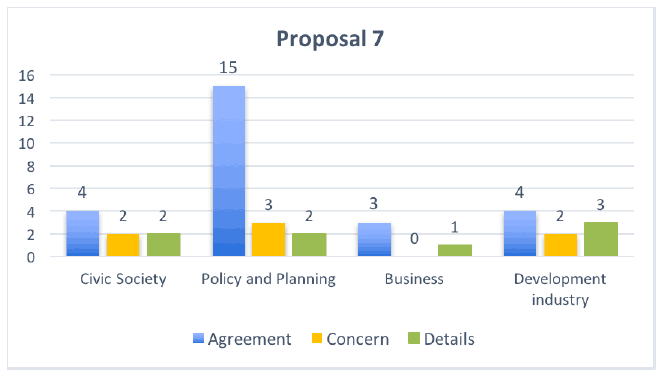
Areas of support/agreement
Across the respondent categories, there was support for getting more people, particularly young people, involved in planning. Business and development industry respondents were supportive of early engagement. Civil society and planning and policy respondents were also aware that there was additional hard to reach groups beyond young people that may need additional work in engaging.
Concerns expressed
Civil society respondents were concerned that despite these proposals token approaches to engagement would prevail. They are, also, concerned that some engagement with young people produces unrealistic outputs.
Planning and policy respondents' concerns were around resourcing for planning departments – particularly if additional skills are needed for engaging with particular groups.
Development industry respondents were concerned if engagement with particular groups becomes a statutory requirement.
More information/clarifications
Across the respondent categories, there was a request for detail on how engagement can be broadened if the moves towards more meaningful agreement will be in primary legislation or secondary legislation and guidance. Detail on Development Plan Scheme and Participation Statements was also requested by the development industry respondents.
Ideas and additional thoughts
Civil society respondents would like to see the findings from the Barriers to Engagement in Planning research implemented. It also suggested that transparency and trust could be built through responding to public comments on PAC and planning applications, resulting in more interest in engaging with the planning system.
A suggestion from the planning and policy respondents was a duty to up-skill community councils and individuals to enable them to engage meaningfully with the planning system. Linking planning into school curriculum could be another route to engaging with young people, creating a more meaningful and lasting effect.
8. Improving public trust
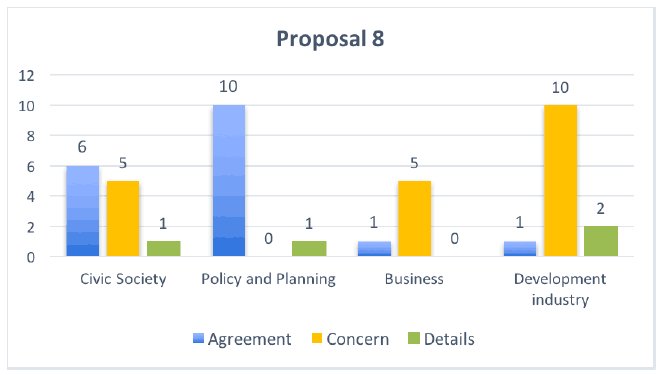
Areas of support/agreement
Civil society respondents supported the removal of repeat applications at no cost, and support proposals to strengthen enforcement powers.
Planning and policy respondents supported proposed PAC enhancement.
Concerns expressed
Civil society respondents continued to note disappointment in the rejection of introducing an Equal Rights of Appeal into the planning system with the request to reconsider this option.
Business and development industry respondents were concerned at the proposal to remove the second application at no cost. Both state that there are multiple reasons for submitting second planning applications. The repeat application is a mechanism that developers can use to deal with amendments; often technical in nature, and removing this may lead to more appeals. Should this be removed, the repeat application should be charged at a reduced fee.
More information/clarifications
Development industry respondents requested further detail on PAC changes and requested that the home building industry is consulted on any changes prior to them being in draft legislation.
Ideas and additional thoughts
Civil society respondents have suggested an alternative to a full Equal Right of Appeal, a mechanism that allows for an appeal in a particular set of circumstances, such as when applications do not conform to the LDP. It is again suggested under this proposal that trust in the system would be improved if comments on planning applications received a response.
Planning and policy respondents would like consideration to be given to whether participation in planning is driven by community empowerment or through providing more opportunities to influence through participation and engagement. There is a key difference between these, which will determine what shape reforms need to take.
9. Keeping decisions local - rights of appeal
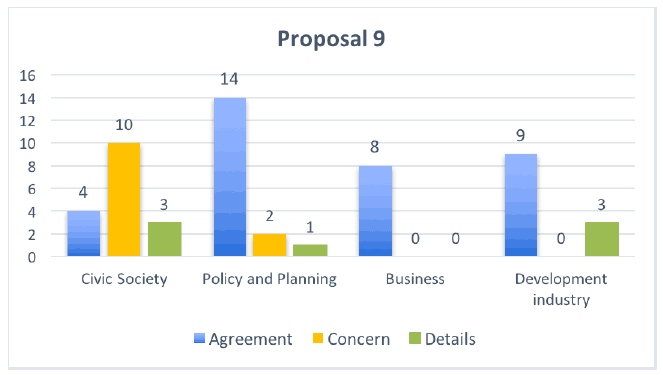
Areas of support/agreement
Civil society, business and development industry respondents supported the proposed review of Local Review Bodies, including reviewing their effectiveness, and whether there should be a limit on the range of applications that they can consider.
There was also support across all the respondent categories for introducing mandatory training for elected officials.
Civil society respondents agreed that ministers should not take planning appeal decisions more frequently.
Planning and policy, business and development industry respondents supported the decision to not introduce Equal Rights of Appeal, with a preference for better early engagement.
Development industry respondents supported the decision not to introduce fees for appeals.
Concerns expressed
Civil society respondents were disappointed that there will be no introduction of an Equal Right of Appeal. There was, also, concern from civil society and planning and policy that there will not be a fee introduced for appeals.
More information/clarifications
Civil society and development industry respondents requested information on how training for elected officials would be delivered, who would be responsible for this and if it will be consistent across the country.
Civil society respondents would also like more information on how Reporters will take community views into account in their decisions and why the Equal Right of Appeal was not adopted.
Ideas and additional thoughts
Civil society respondents requested that the Scottish Government review their position with regard to Equal Rights of Appeal, as they view this as having great potential in allowing communities to express their views and thus, restoring the trust into the planning system.
On the matter of charging fees for appeals, civil society respondents suggested that proportionate fee scale is introduced based on ability to pay or to impose fees on unsuccessful appeals. Planning and policy suggested that fees should be returned should an appellant be successful. The intent of these suggestions was to create a disincentive to developers who are attempting to gain an unpopular planning permission through a process of repeat applications, which burden the system.
Planning and policy respondents have suggested that while subsidiarity in decision-making was a sound principle, there comes the point at which applicants need the opportunity to test their case through an appeal process heard by a Reporter.
Business respondents suggested that only householder or smaller scale applications should go to Local Review Bodies.
Theme 3. Building more homes and delivering infrastructure
10. Being clear about how much housing land is required
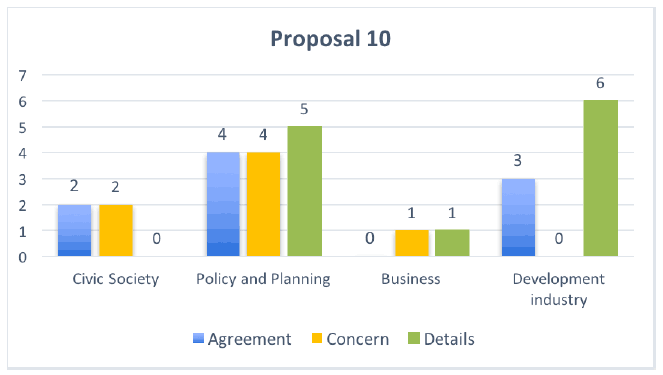
Areas of support/agreement
Planning and policy respondents welcomed moves to give greater certainty to setting housing numbers and reducing debate.
Development industry respondents supported discussions around this proposal including Homes for Scotland – and suggested that these discussions take place prior to the Bill and legislation drafting.
Concerns expressed
Civil society respondents were concerned that the proposals regarding housing are tipping the balance between economic growth and protecting the environment against the latter.
Planning and policy respondents, while supporting moves that give greater certainty and reducing debate, highlighted that setting targets nationally does not necessarily avoid a repeat of debates about numbers when it comes to development plan preparation.
Development industry respondents were concerned that there are not fuller details at this stage in the process, with the next step is drafting the Bill and legislation.
More information/clarifications
Planning and policy, business and development industry respondents would all like clarity on what level housing numbers will be determined at, and what role Regional Partnerships will play in this.
Ideas and additional thoughts
Civil society and planning and policy respondents suggested that communities of place and interest should be added to the list of stakeholders being consulted "housing professionals, planning authorities and developers", to ensure that there is satisfaction with the method.
Planning and policy respondents, also, highlighted a challenge in identifying housing need and demand in rural areas, which may be geographically large, but with sparse populations. Respondents, also, raised the need to identify housing at a sub-national/regional level to understand the impact of major development on transport networks in order to better plan for sustainable transportation.
Business and development industry respondents agreed that there is a need to set housing targets that are clear and have a robust evidence base, rather than aspirations, which they felt could prove to be ineffective. It was suggested this is set through NPF or nationally produced regional guidance.
11. Closing the gap between planning consent and delivery of homes
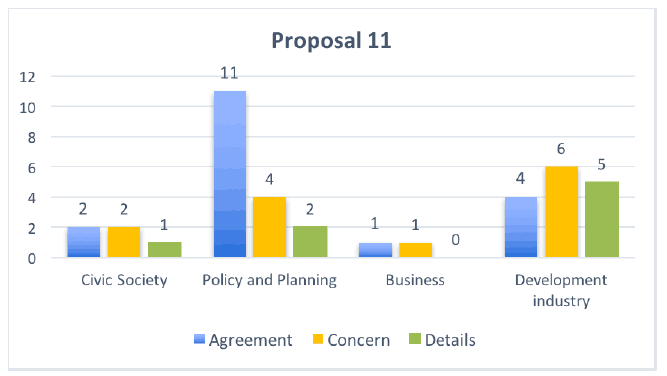
Areas of support/agreement
Civil society respondents welcomed the recognition of environmental assets as being important to Scotland and the creation of great places.
Regarding Compulsory Purchase Orders ( CPO), civil society, planning and policy and business respondents supported the proposal to pursue short term revisions of the operation of existing CPOs; while development industry respondents were supportive of not taking forward changes or the options being explored on CPOs and development land taxes ahead of the Planning Bill.
Concerns expressed
Planning and policy respondents raise concerns around the implications of removing Strategic Development Plans for delivery of homes. Their view was that without SDPAs there could be a diminished capacity to understand regional delivery issues.
Development industry respondents were concerned that proposals to include viability information become a statutory requirement, which may delay development proposals. It was highlighted that different levels of viability information become available at different points in a development delivery timeline, and that viability can change over time. It was suggested that viability information should only be required where viability has been identified as a potential impediment to delivery. There was also concern that even if the information is provided, there was not the skills base in local authority planning teams to assess complex viability information.
More information/clarifications
While much of the closing the gap was predicated on other changes in the planning system, across the respondent categories there was a call for detail on how the planning system will close the gap and demonstrate how this works in practice, including how it delivers not just homes, but high-quality homes in great places.
Planning and policy respondents requested more consultation takes place with local authorities on CPO changes, which can bring benefits, but also risks for LAs.
Ideas and additional thoughts
Civil society respondents suggested that the planning system could determine the types of homes that should be developed as well as the number. This would tie into another suggestion that consideration should be given to developing criteria for high-quality homes, which could include being fit for lifetime occupancy, adaptable for people later in life. This could also include defining densities, such as a minimum density of 30 dwellings per hectare (as used to exist in England) would both ensure effective and efficient use of available land, but also help improve the design and use of the "Designing Streets" approach ( i.e. more houses and less tarmac).
Planning and policy respondents suggested that there is an opportunity for local authorities to lead in creating high-quality places, and tools that enable this should be under consideration – such as CPO powers and capturing land value uplift. The risks of this also need to be taken into account and balanced against the opportunities.
Business and Development industry respondents raise the issue of viability and make the following suggestions:
- Consideration should be given to the appropriate points in the planning process of considering the viability of sites and development delivery – at what point from development planning to development management should this take place?
- Site viability and deliverability should be proven at the allocation stage which would prevent sites which are not deliverable within the plan period being included within LDPs when there is little or no chance of them delivering within the required period.
- Viability submissions must remain confidential, and it should be submitted when the developer contribution threatens the viability of the scheme
From Housing Associations (within the development industry respondents) there were suggestions for ensuring that more affordable housing is delivered when land prices are the primary barrier. They suggested exploring the potential for land to be transferred at existing use value in order to allow increased delivery of affordable housing.
Several of the development industry respondents have offered and want to work with the Scottish Government on taking the proposal forward.
12. Releasing more 'development ready' land for housing
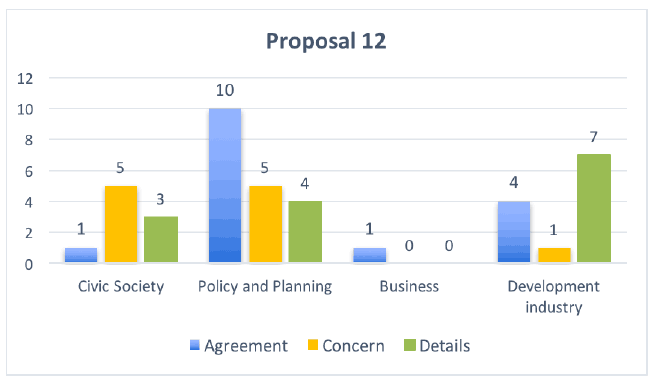
Areas of support/agreement
Civil society respondents supported the Scottish Government's commitment to robust environmental assessment and not undermining this.
Planning and policy, business and development industry respondents all support the Simplified Planning Zone ( SPZ) proposals.
Concerns expressed
Civil society respondents were concerned that SPZs could be allowed in conservation areas or other areas with protection designations. Allowing this was seen as at odds with the aim of creating high-quality places.
Planning and policy respondents were concerned that SPZs may require additional resourcing without necessarily speeding up the delivery of homes. Other concerns were around front-funding infrastructure and other resourcing issues such as a funding-gap when no planning application fees are collected.
Development industry respondents echoed the concerns of planning and policy that SPZs may not speed up the delivery of homes. There was also some caution from this category, with a desire for consultation on both the operation of SPZs and on discretionary charging proposals before anything is taken further forwards.
More information/clarifications
Planning and policy respondents sought clarity on how any funding-gap, shuld it arise, would be addressed. There was also a question of how community or local authority concerns would be dealt with in the event that a Minister directs the establishment of an SPZ in the national interest.
Development industry respondents would like to see further detail on delivery, management and funding of SPZs.
Ideas and additional thoughts
The rebranding of SPZs was supported by civil society and planning and policy respondents, with suggestions of renaming "Strategic Development Zones", and that the rebrand and refresh should reflect the purpose set out in Places, People and Planning as a tool for encouraging masterplanning and strong design codes. The success of SPZs will be if they deliver high standards of design and quality of place.
Civil society respondents suggested that exclusions should be made as to where or where not SPZs can be established. A suggestion for these exclusions is all areas around listed buildings or scheduled monuments, conservation areas, designated landscapes, SSSI, greenspace network, wildlife corridors, and related settings and surroundings.
13. Embedding an infrastructure first approach
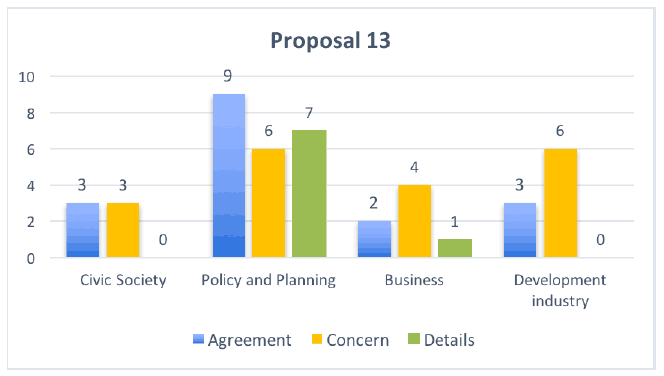
Areas of support/agreement
There was support across the respondent categories for the infrastructure first approach.
Civil society respondents supported the regional infrastructure audits, and that this should incorporate green infrastructure.
Business respondents supported the commitment to consult with key delivery partners as to the role and purpose of the proposed national delivery group.
Development industry respondents had differing views on the National Infrastructure Delivery Group, with some in part supported the decision not to introduce an agency, but the delivery group in its stead, and there was support the proposal for infrastructure auditing.
Concerns expressed
Civil society respondents were concerned that infrastructure is currently under such pressure that a new approach will be unable to alleviate these pressures. A transition to a new approach would be needed to address current pressures. Regarding the national development group proposed, there was concern as to how this group will have local and national accountability.
Planning and policy respondents expressed disappointment in rejection of a national agency model. Local authorities need help in unlocking development – assistance, if not provided by an agency could be provided in other ways as a priority. There was also a feeling that a strategic and long-term view not adequately addressed through proposals.
Business respondents were concerned that a national delivery group will not be as effective as an agency may be. Without a set of duties to steer the delivery group may not have the necessary drive or clout to deliver. Another concern was that the focus in the Position Statement was on housing delivery, but infrastructure considerations need to include utilities, energy, telecommunications, waste, transport etc. Finally, there was concern that a Scottish Infrastructure Levy would be imposed on energy infrastructure or telecommunications projects, the argument being that these developments do not impact on development the same way and should be exempted.
Development industry respondents with a different view to those who supported the delivery group approach were concerned that without statutory requirements the status quo will remain when it comes to constraints, and would prefer the commitment and certainty that would be provided by a national infrastructure agency.
More information/clarifications
Planning and policy respondents requested more details on the precise role of partnership working to help improve infrastructure governance and co-ordination. Additionally, they requested more information on the source of funds that any national body established would manage, and who would mediate and take the final decision if competing priorities were identified.
Ideas and additional thoughts
Civil society respondents suggested that multi-agency Regional Partnerships may be well placed to have responsibility for infrastructure planning, coordination and delivery. The also sounded a note of caution, that account must be taken of community and environmental impacts when considering an infrastructure first approach, and it must not be a top-down imposition of proposals in the name of quicker delivery.
Planning and policy respondents suggested a learning approach – to learn from what has worked and to learn what causes development blockages. There was also the suggestion that Regional Transport Partnerships could play an important role in terms of continuity and knowledge at a regional level, and Transport Scotland could play a role in front-funding key infrastructure to pump-prime sites.
RTPI Scotland proposed the introduction of a task force charged with carrying out a national infrastructure audit. This would not require the setting up of a new infrastructure agency but could help to improve horizon scanning for needed national and strategic infrastructure projects.
Development industry respondents noted that infrastructure constraints were probably one of the most significant barriers to development. Alignment of infrastructure provision within the proposed regional partnership working will be important, and proactive working and upfront delivery of infrastructure from Councils to enable delivery of development. They also noted that education infrastructure is a key constraint, and requires consideration.
14. Creating a fairer and more transparent approach to funding infrastructure
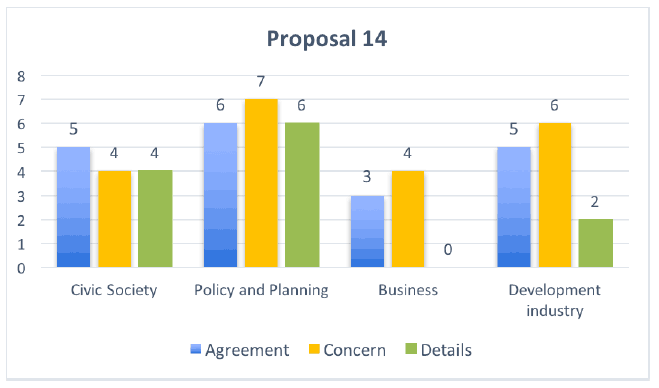
Areas of support/agreement
Civil society and planning and policy respondents were supportive of the ongoing research into an infrastructure levy. Civil society would like green infrastructure to be included in what can be funded from the levy, and that the levy is in addition to site-specific obligations and not a replacement. Planning and policy supported the proposed levy on the basis that the following can be resolved: the cumulative impact of new infrastructure levy and S75 obligations does not negatively impact on developers and viability; that monies from the fund can be used to deliver infrastructure upfront, and whether or not the fund will be managed to leverage its value, as a solution to long-term infrastructure challenges.
Business and development industry respondents supported not moving to remove the provisions at Section 75A for modifying planning obligations.
Concerns expressed
Both civil society and planning and policy suggested that the proposal avoids consideration of funding through public buying at existing values or taxation to gain uplift in value when land use is changed. Both of these respondent categories were as well disappointed that removal of the ability to modify/discharge has been rejected, but noted that changes may be required regarding future infrastructure levy.
Business respondents' concerns were that while a levy could help fund infrastructure for housing development, it could impact development, which has little or no impact on infrastructures, such as energy or telecommunications. There was, also, concern regarding the CIL experience. S75A obligations must be considered alongside future decisions on the role of a levy.
Development industry respondents were concerned about any levy/taxation that is not supported by delivery mechanism – rates and collection can be set through Supplementary Guidance but difficult to guarantee what funds are spent or programmed to be spent on.
More information/clarifications
Planning and policy and business respondents acknowledged that following the Stage 3 research report there will need to be consideration of further options, with business respondents seeking further consultation on these options.
Development industry respondents suggested the following as matters still requiring further detail and consideration: who has responsibility for delivering and coordinating infrastructure; how this fits with housing delivery; how the levy will be scrutinised; and what financial burden should be anticipated by the development industry.
Ideas and additional thoughts
Civil society respondents highlighted that while the focus appears primarily to be the provision of new infrastructure, existing infrastructure remains important in terms of maintaining quality of place and should also be under consideration.
Planning and policy respondents suggested that in place of removing the ability to modify Section 75A obligations, Local Authorities should have the option as co-signatory to modify or discharge based on changing circumstances. There is also a suggestion that Regional Transport Partnerships are explicitly asked to feed into the Scottish Futures Trust work. Finally, from this respondent category, the idea re-emphasises that the Scottish Government needs to consider how land value uplift can be captured when land is allocated or made viable through infrastructure provision.
Business respondents suggested that development such as energy or telecommunications infrastructure arguably does not put the same pressures on infrastructure. Therefore, they recommend a similar approach (a development that is not a building) to exclusions as in the English Community Infrastructure Levy.
Both business and development industry respondents sought consultation prior to changes being implemented.
15. Innovative infrastructure planning
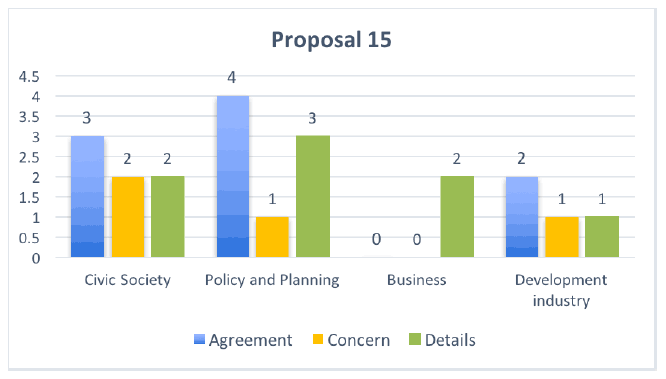
Areas of support/agreement
Civil society respondents supported not removing Section 3F. They also supported the extension of permitted development rights and would like to see consideration given to small-scale low-carbon improvements such as micro renewables, electric vehicle charging points and cycling infrastructure in some circumstances.
Planning and policy respondents were supportive of the principle of encouraging new developments to install and operate low and zero carbon-generating technologies. But as noted below do not consider Section 3F of the Town & Country Planning (Scotland) Act 1997, as introduced by Section 72 of the Climate Change (Scotland) Act 2009 the best or most efficient means of doing so. Development industry respondents held similar views.
Concerns expressed
Civil society respondents believed more could be made in the Position Statement of the role of planning in tackling climate change. While it was acknowledged that this was implicit, there would be a lot of value in being explicit.
Planning and policy and development industry respondents both expressed disappointment that Section 3F will not be removed. They argued that it creates a potential burden, adds double working to aspects of development already assessed by building standards and control, and adds a layer of complexity to the planning system where it is not necessary to do so.
More information/clarifications
Civil society and business respondents would like further detail on how planning can tackle climate change, how it aids in planning for future energy needs and the alignment between planning reform and the finalised Climate Change Plan, Energy Strategy and Onshore Wind Policy Statement, due to be published in the coming months.
Planning and policy respondents would like more detail or guidance on how duplication of work between planning and building control can be avoided with regard to Section 3F.
Development industry respondents noted that education infrastructure is a large barrier to housing delivery and would, therefore, like to see the detail on the continuing work on education infrastructure planning.
Ideas and additional thoughts
Civil society respondents suggested that climate change and environmental protections should be embedded in any legislation.
Planning and policy believed that consideration needs to be given to how the planning system can have an effective role in supporting Scotland's climate change targets – as they argue that Section 3F is not progressing change.
Business respondents reiterated the point that discussion needs to be on more than infrastructure supporting housing delivery. Policy needs to support delivery of other policy objectives such as renewable energy and a low carbon future – it is not just about delivering housing.
Theme 4. Stronger leadership and smarter resourcing
16. Developing skills to deliver outcomes
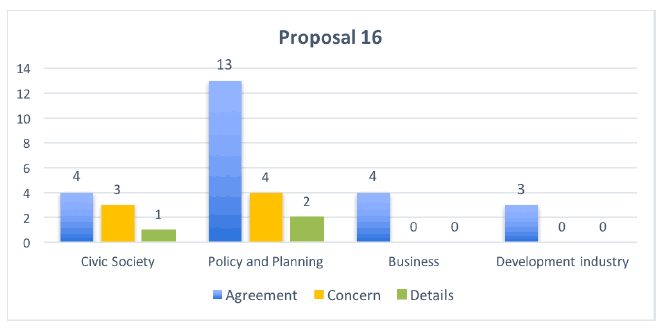
Areas of support/agreement
Across the respondent categories there was support for the proposals. With regards to skills sharing, the development industry respondents supported this as a route to greater efficiencies and increased performance, civil society respondents supported this as they think it will fill gaps in environmental assessment, and planning and policy supported skills sharing provided that it means supporting archaeology and heritage services (through improved training) – rather than depletion and stretching those services.
There was welcome for the RTPI skills audit.
Concerns expressed
Civil society respondents who had previously suggested a role of Chief Planning Officer in Local Authorities were concerned that there was no mention of that as if ignored.
Planning and policy respondents were concerned that sharing services should not come at the expense of role archaeologist or another specialist can play when embedded in an LA.
More information/clarifications
Planning and policy would like more opportunity for needed discussions on developing skills.
A civil society respondent would like more information on how local authorities will take this proposal forward.
Ideas and additional thoughts
Civil society respondents suggested a central Scottish Government expert team that would support planning authorities with specialist advice as and when needed. Areas that could benefit from additional support include mineral extraction, retail assessment, heritage and archaeology and onshore wind.
Planning and policy respondents recognised that up-skilling is good, but also awareness of opportunities from new technology and how to embrace these.
Development industry respondents noted that development of skills should be through transparent engagement between public and private sector to develop mutual understanding. Specialist skills could be improved through closer collaboration between neighbouring authorities or through regional planning partnerships. Development viability, archaeology, retail impact assessment, EIA, housing and employment land supply assessment, economic assessment.
17. Investing in a better service
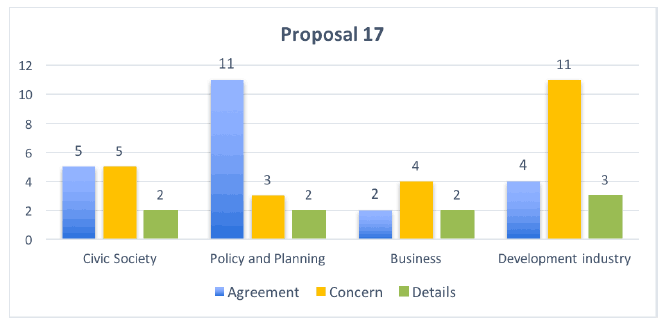
Areas of support/agreement
Civil society respondents support increased fees, with the aim of increasing the quality of decisions, not just speed. There was support for full cost recovery.
Planning and policy respondents supported increasing planning fees, suggesting these should be ring-fenced to provide an improved service. They also support the proposal to enable discretionary charging and an extension of the services for which fees can be charged.
Business respondents support increased fees if it can deliver a demonstrable improvement in service.
Concerns expressed
Civil society respondents were concerned that paying a higher or additional fee could lead to a multi-tier system with larger fees capturing time and attention.
Planning and policy respondents believed that clarity on final resource implications for planning departments is needed before decisions on fees can be made. There were concern and disappointment expressed that there will be a delay in increasing fees and therefore, no immediate fix – planning departments have a long-standing funding gap in many instances that needs to be met before services can be improved or adapted to reforms.
Business and development industry respondents were concerned that discretionary charging could create an uneven playing field across Scotland – applicants being held to ransom or a race to the bottom. They were also concerned that clear performance indicators do not accompany the suggested increase to fees, as this improved service and performance were the primary basis on which these sectors support these proposals. The development industry was disappointed that the new fee schedule was implemented ahead of the planning review completion.
More information/clarifications
Planning and policy respondents would like more detail on discretionary charging – what the scale might be and what additional services could be charged for.
Across civil society, business and development industry respondents, further detail on how improved performance will be measured is requested.
Business and development industry respondents would like work to be conducted on the potential impact of increased fees on users of the planning system.
Ideas and additional thoughts
Civil society respondents suggested that additional services that could be charged for might include monitoring of consents for EIA developments, energy developments and mineral extraction in particular. There was also a suggestion that an additional fee or penalty should be charged for retrospective planning applications.
Planning and policy respondents suggested that a final, comprehensive assessment of funding and resourcing requirements needs to wait until the final publication of the new planning measures so that a full position of new and additional duties and related costs can be predicted. There was, also, acknowledgement that new or increased costs should be proportionate to the type and quality of service, and not be excessively onerous to the applicant. Some suggested that a reduced fee could be introduced for online application.
Business and development industry respondents suggested that any increase in fees paid by the private sector needs to result directly in an injection of additional resources for planning services, delivering stronger leadership that supports the appropriate development and encourages new investment in our built environment. Alongside this, there needs to be meaningful quality control in place to ensure the improved service aligns with increased fees.
There was also a suggestion that applications submitted online can be subject to a reduced fee.
18. A new approach to improving performance
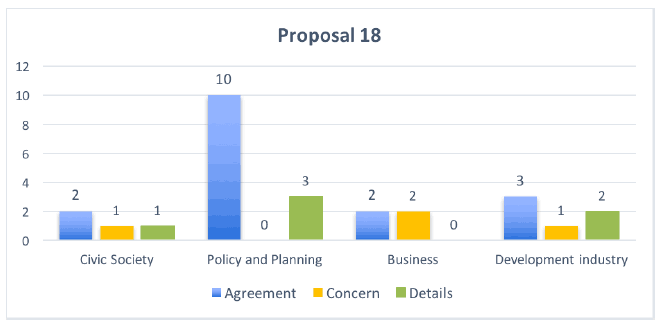
Areas of support/agreement
Civil society and planning and policy respondents remained supportive of the monitoring of outcomes over procedures – and respondents were pleased to note climate change and carbon emissions monitoring included the Position Statement. Place Standard also remained a tool that was considered useful for this purpose.
Business and Development industry respondents were supportive of any measures in support of improvements to performance across the planning system.
Concerns expressed
Civil society respondents were disappointed that how outcomes will be monitored is not defined: will it be decision-making speed, quality of development or both?
Business respondents would be concerned if a penalty clause were to be retained, as these could place a strain on already underperforming authorities. They also hoped that a lack of detail does not mean that focus on high performing system will be reduced, whether or not planning fees are increased.
More information/clarifications
Planning and policy respondents asked for clarification on any new performance framework, will it be designed to fit the reformed system with a focus on quality outcomes as opposed to measuring procedures?
Civil society and development industry respondents asked for further details about the proposal.
Ideas and additional thoughts
Civil society respondents suggested that performance could include the impact of public engagement on planning decisions, the quality of public engagement processes and independent, expert assessments of economic, environmental, and social outcomes as products of the planning system's operation.
Planning and policy respondents suggested including health and well-being outcomes, climate change and carbon emission targets, and monitor the impact of the link between community planning and spatial planning. Monitoring could be on a core set of outcomes as different authorities may have different priorities dependent on local needs.
Business respondents suggested that low performance may be better addressed through imposing statutory improvements or peer intervention instead of penalties. They also suggested that the high-level group looking at performance should include private sector voice with experience of major applications.
Development industry respondents did suggest that sanctions for authorities that consistently fail to improve could be brought through either Regulatory Reform (Scotland) Act 2013, or under Part12A of 2006 Act. Greater transparency of performance will be required. Other respondents within the sector suggest that Audit Scotland should carry out necessary assessment. Poor productivity seems to be the root issue and should be addressed before money is spent.
19. Making better use of resources: efficient decision-making
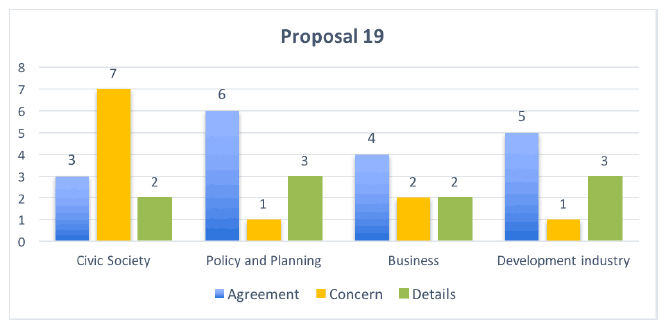
Areas of support/agreement
Civil society respondents supported extended permitted development rights provided that it does not give developers free reign. There were also a few (4) campaign-type responses seeking permitted development rights for front garden bike stores or sheds.
Planning and policy respondents supported the expansion of PDR with appropriate protections for rural, environmental and conservation designations.
Business respondents supported the proposals as a move to deliver more robust consents ultimately, and reduce the occasion for legal challenges to be brought forward.
Development industry respondents supported an expansion of PDR on the basis that this could free time for planning officers to work on the main applications.
Concerns expressed
Civil society respondents were concerned that some forms of permitted development rights could have a negative impact – for instance, what would be acceptable in conservation areas and other designated sites, and in the immediate surroundings of such areas. There was also concern that the extension of permitted development rights should not be purely about efficiency at the expense of quality decision-making.
Planning and policy respondents were concerned that the extension of PDR may not free up resources as intended as people seek guidance on whether development is permitted or not. Alongside this was a concern that there could be a loss of application fee income.
Development industry respondents were concerned that details on measures to improve development management procedures had not been outlined. Some expressed concern that the extended use of PDR will not impact the resources positively and thus, result in an improved performance and productivity.
More information/clarifications
Civil society respondents suggested that information could be gathered on the current impact of PDR and this ought to be used to inform any proposed extension of PDR.
Policy and planning respondents requested more details about PDR and wanted to know if local authorities would be allowed to decide examples of PDR in their own areas.
Business respondents requested further information on the development management procedures.
Development industry respondents would like further consultation on development management procedures to be carried out as the detail on this is developed. As well more details on what the changes for PDR will comprise.
Ideas and additional thoughts
Planning and policy suggested that the same PDR rules should be applied to contractors if they are carrying out the same works that a statutory under-taker would, for example laying cabling in roadside verges.
Business respondents suggested that PDR should be extended to small-scale renewable energy projects with a capacity of 2-3kw and under. They suggested that there is a need for improved knowledge of on-shore wind sector needed – repowering and modern turbines especially. There was also the issue of Electricity Generation Licenses; these should be extended to proposals under 50 MW in order to grant the same rights and level the playing field. This is important in a sector, which has shifted from a few large-scale producers of energy to a multiplicity of smaller scale producers.
Development industry respondents suggested the following areas for development management review:
- Introducing application procedures to change planning permissions by a non-material variation (under section 64) or a minor material amendment – and allow the opportunity to appeal;
- Definition of planning applications – such as a requirement for Design (and Access) Statements for applications for planning permission in principle;
- Timescales for certain procedures – registration, request for further information, neighbour notification, consultation responses, and issuing planning decisions. Refreshed government circular on the use of conditions in granting planning consents.
20. Innovation, designing for the future and the digital transformation of the planning service
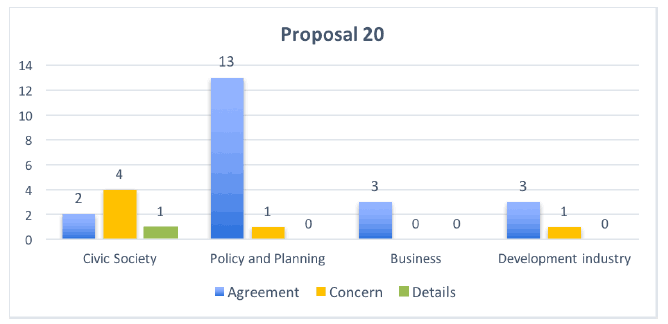
Areas of support/agreement
Civil society respondents were pleased that concerns regarding digital exclusion have been considered. Community council respondents suggested that assistance should be made available to ensure that community councils have the facilities and skills to work online and to be able to produce paper copies of materials for people who do not have access.
Planning and policy respondents were supportive of the proposals.
Businesses respondents were supportive of ePlanning system proposals – although resources and skills needed to implement. Both business and development industry respondents supported the establishment of a Digital Task Force, technology is an enabler and could help more people interact with the planning system.
Concerns expressed
Civil society respondents were concerned that the adoption of the digital technology could lead to 'bigger and better mistakes' – when the emphasis should be on improving public disenchantment and poor quality outcomes.
Concern from policy and planning respondents that some people might feel marginalised by the digital transformation.
Some from the development industry respondent felt that digital technology should not replace the requirements for a strong approach to "survey, analysis, plan".
More information/clarifications
Civil society respondents suggested that an ePlanning Code of Good Practice should be a priority, to stop the perceived abuse of the system.
Ideas and additional thoughts
Civil society respondents suggested that consideration needs to be given to rural communities and ability to skip content that takes a long time to load over slower connections.
Planning and policy respondents suggested that technology reforms should run in parallel to other reforms or risk wasting resources. For example, the new LDP process should be put in place with supporting technology and not have it retrofitted. Digital exclusion should be a consideration for the Digital Task Force, how to overcome this and ensure that with a move to using more technology people or groups are not excluded from using the planning system. The Digital Task Force could also consider national standards for planning application submissions online. Currently, each Local Authority adapts to match their system leading to quite different formats around the country. Scotland's Greenspace Map was cited as an example of what can be achieved with national standards.
Business respondents believed there are opportunities in using social media to engage more people in the planning system.
Development industry respondents suggested that digital technology could introduce 'real time' tracking of applications, providing a valuable piece of information to applicants. They also noted that technology would never replace the need in planning to have dialogue among stakeholders as to the right location for development – technology can help facilitate with the right information.
Contact
There is a problem
Thanks for your feedback